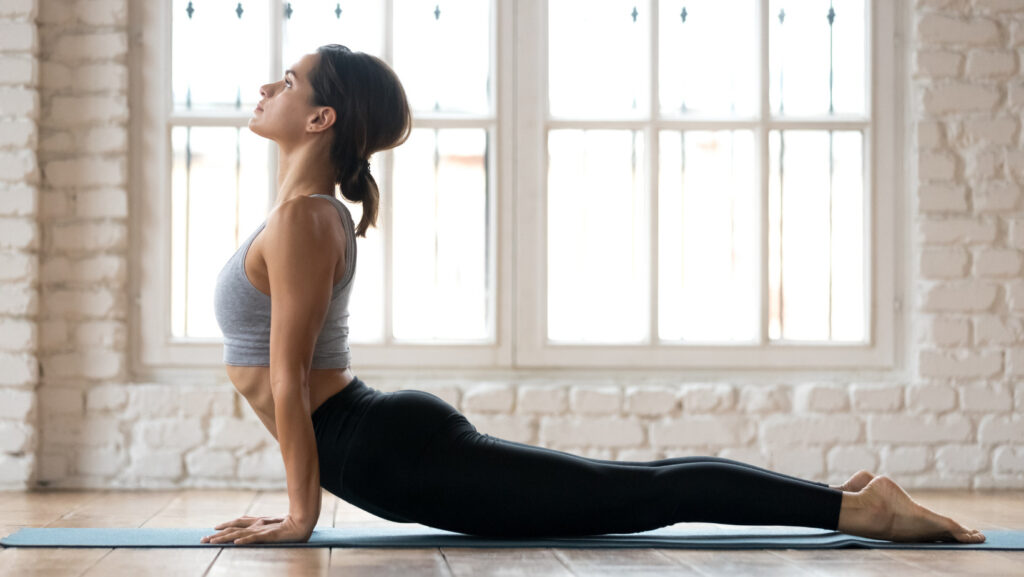
Anahata translates to ‘unstruck sound’ and can be understood as the energetic mainframe of our experience. The heart allows us to feel connected, content, joyful, and open. The heart chakra is associated with the color green and is associated in yoga with the bija mantra seed sound Yam.
When the heart chakra is balanced, we are giving, loving, and accepting of ourselves and others. A balanced Anahata chakra helps illuminate our interconnectedness. We can give and receive love without condition and are able to forgive ourselves and others. With the support of the first three chakras, we can maintain a connection to our needs and embrace interdependence without codependence clouding the way. In yoga, we call this energetic state of being sattvic. In this state, we are able to confidently practice discernment and can trust our intuition to inform and guide us.
An imbalanced heart chakra can contribute to issues around relationships, intimacy, vulnerability, and boundaries. A weakened heart chakra can also affect postural conditioning, causing us to be withdrawn, timid, or aloof.
Where is your heart chakra? The heart chakra is located in the heart space beneath the sternum, at the top of the thoracic spine. In yogic philosophy, it represents our connection to Self, abundance, and love.
What affirmations are good for heart chakra? Affirmations are positive statements that confirm something to be true. Affirmations are a helpful tool for improving self-esteem and embodying certain qualities we endeavor to possess. Affirmations can be added to any yoga routine or used as an accessible part of many self-care rituals. You can introduce affirmations first thing in the morning, before practice, or anytime throughout the day as a way to connect and reground. Affirmations for the heart chakra include:
I am loving.
I am worthy of love.
I am a compassionate being in an experience.
I am balanced and full of love.
Love starts with me.
I am abundant in compassion and love.
What poses are good for heart chakra? Poses that open the front body and increase the flow of oxygen to the lungs are great for the heart chakra. Think crescent lunge with dynamic bent arms, supported fish, cobra, sphinx, wheel pose, and reverse warrior. Placing the hands on the body or taking mudra from a comfortable seat can also be good for developing a relationship with Anahata chakra.
Heart chakra vinyasa flow
This heart chakra mini vinyasa flow is wonderful for any time of day, especially on a beautiful day outside in the sun. Another great time to tap into Anahata is during new moon rituals around setting heartfelt intentions. Feel free to incorporate any yoga props you like. Incorporating a favorite playlist, aromatic candles, or a well-placed crystal grid would be nice, as well.
Arrive
Come to tadasana. From the waist up, finding intentional length and an open heart. Reach the heart forward by opening the collarbones east to west. Release the chin down and grow the spine tall. Soften the gaze or close down the eyes.
Take a full breath in. expanding all four corners of the lungs. Exhale, place the left hand on the heart, let the right hand come to cover it.
Breathe here for 3-5 breaths, notice the ebb and flow of the lungs.
Inhale, I am love. Exhale, I am peace.
Move
Inhale gaze up, sweep the arms overhead. Exhale, palms together. Lower hands to your heart center. Repeat 3-5 times.
Inhale gaze up, sweep the arms overhead. Exhale, flip the palms forward, bend the elbows, gaze up. Inhale, gaze forward, lift the arms. Exhale, flip the palms forward, bend the elbows, gaze up. At the bottom of the exhale, draw the shoulder blades together, letting the heart shine. Repeat 3-5 times. Exhale hands to your heart center.
Inhale rise up, exhale fold.
Inhale, half lift.
Exhale, plant the hands, and step back to high plank. Lower down to the knees, untuck the toes. Take a full breath in, and lower all the way down. Lead with love.
Inhale, slide the palms outside the heart. Lift the chest, baby cobra.
Exhale, lower down. Repeat 3-5 times.
Press back to table top.
Inhale to cow pose.
Exhale to cat pose.
Inhale, lengthen the spine.
Exhale into wide-legged child’s pose. Stay 3-5 breaths.
Inhale to table top.
Exhale into downward facing dog.
Inhale, gaze forward.
Exhale, step to the top of the mat, forward fold.
Inhale, half lift.
Exhale to fold.
Inhale, root to rise.
Exhale tadasana.
Inhale fully. Exhale step the right leg back finding a high crescent lunge.
Inhale arms up.
Exhale, bend the elbows, and shine the palms forward. Repeat 3-5 times focusing awareness on an open heart center. Step back to tadasana. Repeat high crescent lunge left.
From tadasana step the feet out wide and lower into malasana.
Bring the hands to your heart center, letting the thumbs find your sternum. Feel your heartbeat. Know your aliveness. Stay here allowing the breath to flow naturally before coming into savasana.
Be
Make your way to savasana. Option for a pillow under the head or bolster under the knees.
Release the backs of the hands to the earth. Option to join the thumb and index finger for air mudra. Breathing in through the palms, sending love to the heart.
